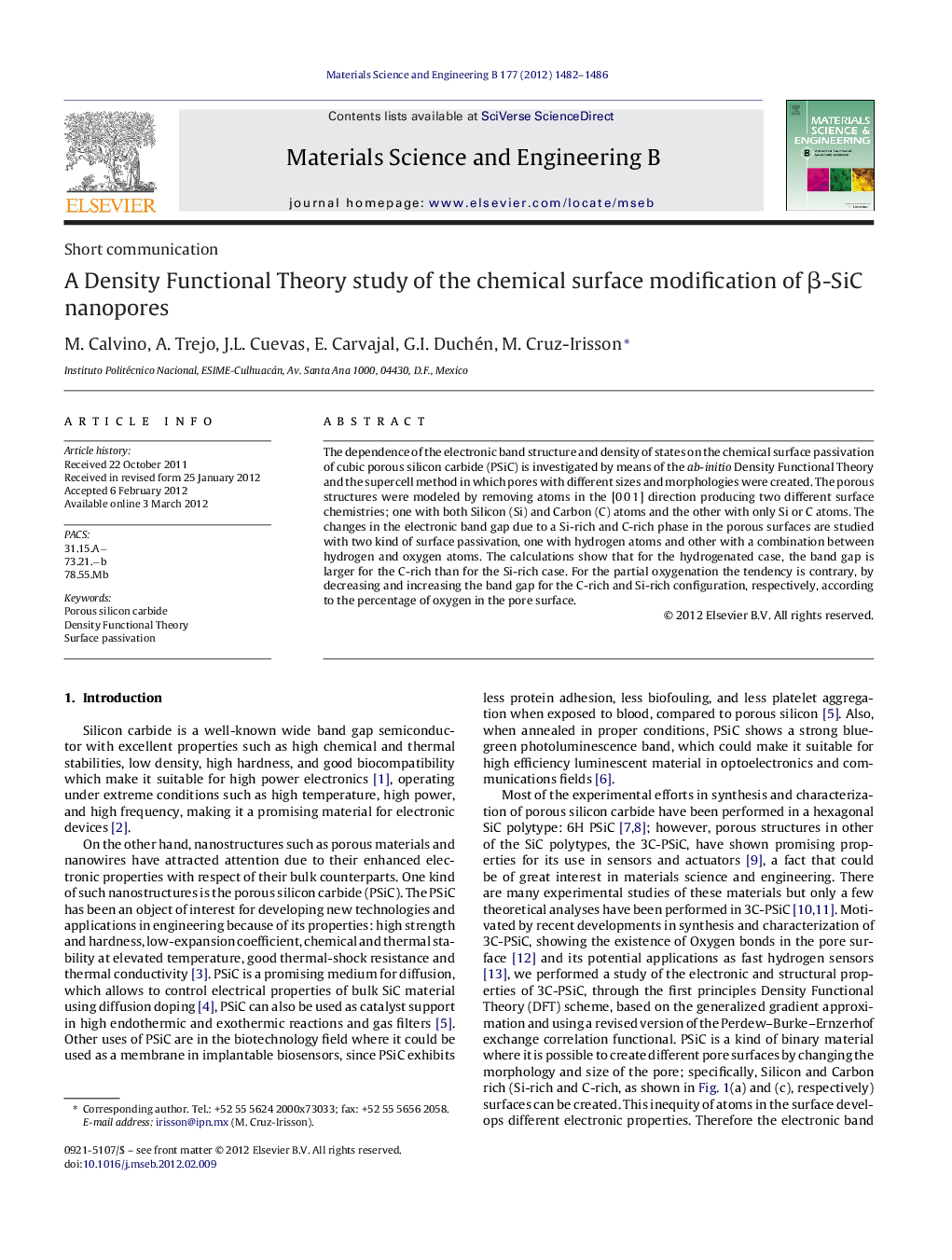| Article ID | Journal | Published Year | Pages | File Type |
|---|---|---|---|---|
| 1529183 | Materials Science and Engineering: B | 2012 | 5 Pages |
The dependence of the electronic band structure and density of states on the chemical surface passivation of cubic porous silicon carbide (PSiC) is investigated by means of the ab-initio Density Functional Theory and the supercell method in which pores with different sizes and morphologies were created. The porous structures were modeled by removing atoms in the [0 0 1] direction producing two different surface chemistries; one with both Silicon (Si) and Carbon (C) atoms and the other with only Si or C atoms. The changes in the electronic band gap due to a Si-rich and C-rich phase in the porous surfaces are studied with two kind of surface passivation, one with hydrogen atoms and other with a combination between hydrogen and oxygen atoms. The calculations show that for the hydrogenated case, the band gap is larger for the C-rich than for the Si-rich case. For the partial oxygenation the tendency is contrary, by decreasing and increasing the band gap for the C-rich and Si-rich configuration, respectively, according to the percentage of oxygen in the pore surface.
